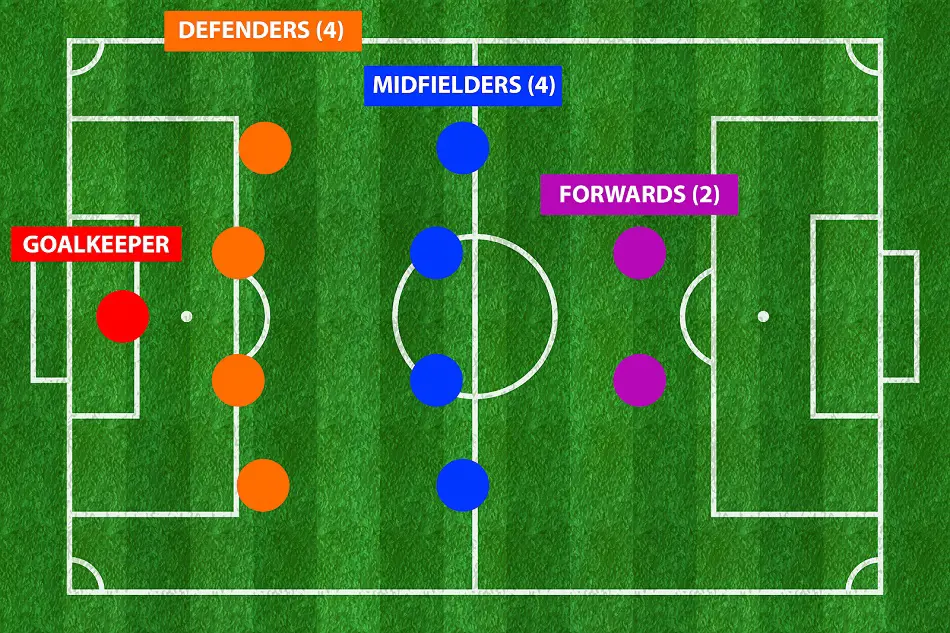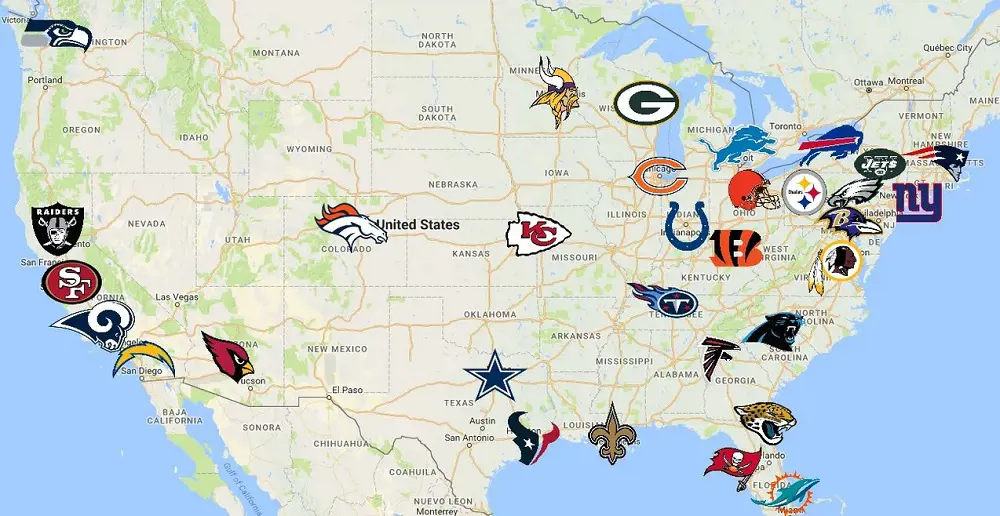Soccer is played by two teams of eleven players each, to score goals by kicking a ball into the opponent's net. To do this, players take on distinct roles and responsibilities on the field.
Every position has its important role, but most people think attackers or strikers are the main position on the field as they are mostly on the scoresheet.
Eventually, the importance of each position is determined by the team's style and the strengths of individual players. A team that has a great defense but no creative midfielder may struggle to score, whereas a squad that has talented attackers but a leaky defense may concede too easily.
Goalkeeper

The Goalkeeper or goalie position in soccer is unlike any other, having distinct responsibilities and challenges that contribute greatly to a team's success.
They play an important role in preventing the opposition side from scoring goals. The goalkeeper, who is positioned within the penalty area, uses their hands and body to block shots on goal.
GKs have special abilities like quick reflexes, agility, and superb decision-making. Among all positions in soccer, GK is one of the most important.
Their major job is to protect the goalpost and make important saves, contributing significantly to the team's overall defensive strategy. Goalkeepers usually wear 1 number positions in soccer.
The best goalkeeper currently is Thibaut Courtois of Belgium and Real Madrid.
Centre-Back

A center defender is one of the soccer defense positions and they are often known as a centre-back (CB), which is an important member of the team's defense. They are positioned in the center of the backline to stymie opposing attacks and maintain defensive stability.
CBs are physically strong, have good aerial ability, and have tactical understanding. Their key responsibilities include intercepting passes, making timely tackles, and assisting the goalie.
They also play an important role in establishing build-up play and distributing the ball to initiate offensive movements. Centre-backs play a big role in organizing the team's defensive form and preventing opponents from scoring.
Full-Back

Full-backs, often known as right and left backs, are crucial players who play on the defensive line's flanks. Right-backs play on the right side, while left-backs play on the left.
They serve a dual purpose, defending against opposing wingers while also contributing to offensive moves. To prevent attacks, make tackles, and intercept passes, full-backs must have speed, stamina, and defensive prowess.
They provide width in the offensive phase while also overlapping wingers and providing crosses into the area. Full-backs are important components in modern soccer systems because of their ability to blend defensive responsibilities with offensive contributions.
Wing-Back

Quite similar to Full-Backs, Wing-backs are dynamic players who combine defensive and offensive duties, operating wide on the flanks. Positioned between traditional side defenders and wingers, they provide defensive solidity while actively participating in attacking plays.
Wing-backs are characterized by their exceptional speed, stamina, and versatility. Engaging in overlapping runs, they contribute to wide attacks, deliver crosses, and support the team's offensive endeavors.
This role is prevalent in formations like the 3-5-2 or 5-3-2, where wing-backs cover large areas of the pitch, blending defensive resilience with attacking prowess. Their ability to transition seamlessly between defense and attack makes wing-backs integral to modern tactical systems.
Sweeper

A sweeper is a defensive player who plays as the last line of defense behind the center-backs. The major responsibility of the sweeper is to "sweep up" any loose balls or opposing attacks that penetrate the defensive line.
Sweepers, known for their strategic placement and exceptional game reading, serve as a safety net, clearing possible goal-scoring opportunities. This position was more common in older formations such as the 3-5-2.
While recent tactical developments have diminished the employment of sweepers, their legacy lives on, highlighting the significance of a composed and intelligent player in soccer to secure the defensive rear.
Centre Midfield

Centre Midfielder (CM) plays an important role in both the defensive and offensive phases. They are positioned in the center of the field and serve as the team's motor, connecting defense and attack.
They are recognized for their ball control, precision in passing, and vision. They control the game's pace, throw the ball to teammates, and help defensively by intercepting passes and making tackles.
Box-to-box midfielders cover a lot of ground, whilst playmakers specialize in imaginative passes. The Centre Midfielder is critical for the team's possession, attack launching, and stability.
Luka Modric of Real Madrid is currently one of the best Centre Midfielder in the world.
Defensive Midfield

In the midfield chessboard, the Defensive Midfielder reigns as the unsung hero. They are often known as "holding midfielders" or "Number 6," is an important player who specializes in defensive duties.
They operate as a shield in front of the defense, disrupting opposing attacks and regaining possession. Defensive midfielders, known for their tactical awareness, interceptions, and physical presence, serve as a vital link between defense and midfield.
They distribute the ball effectively, disrupting opposing plays and generating counterattacks.
Defensive midfielders, with a focus on ball-winning and positional discipline, play an important role in regulating the tempo of the game, providing defensive solidity, and easing the transition from defense to attack.
Attacking Midfield

An attacking midfielder is a player who normally plays as a Number 10. They are a creative force essential for offensive play. Also, it is among kids soccer positions which is most preferred.
Attacking midfielders connect the midfield to the forward line with technical ability, dribbling, and smart placement. They operate behind strikers, taking advantage of openings, and frequently contribute to goal-scoring with perfect through balls or individual brilliance.
They are the playmakers with the ability to unlock defenses, create chances, and score goals. Their creativity is essential in breaking down opponent defenses and influencing the flow of the game in the attacking third.
Wide Midfield

Left and right midfielders, known in soccer as wide midfielders, play critical duties on the sides. They contribute to both the defensive and offensive phases of the game by operating on the left and right sides of the midfield, respectively.
These players provide breadth in attacking plays by utilizing their speed, dribbling, and crossing ability. Left midfielders frequently cut inside onto their stronger foot, whilst right midfielders may seek crosses from the right wing.
On defense, they track back to assist full-backs in preventing opponent attacks. Left and right midfielders are critical in creating scoring chances and preserving tactical balance.
Winger

In soccer, a winger is a dynamic player who plays on the sides and specializes in offensive contributions. Wingers, known for their speed, dribbling, and flair, excel in one-on-one situations, creating goal-scoring possibilities.
They routinely cut inside onto their stronger foot to unleash shots or execute complicated plays. Wingers play an important part in adding breadth to the team's attack due to their ability to deliver precise crosses and exploit defensive vulnerabilities.
Their skill set frequently includes vision and inventiveness, making them invaluable in breaking down defenses, launching attacks, and notably contributing to a team's goal-scoring prowess.
Striker

A striker is a major goal-scoring player who plays at the head of the attacking line. They are known for their finishing abilities, quick intuition, and placement, and they try to score goals and lead the offensive charge.
Strikers frequently use savvy movement to avoid opponents, create scoring chances, and capitalize on opportunities. They are usually physically strong for hold-up play or agile for quick strikes.
Their efficacy is critical to a team's success because they convert chances into goals. Strikers are frequently the focal center of offensive strategy, embodying the goal-scoring ability required to win.
Soccer positions by number a striker usually wears the number 11 or 9.
Second Striker

In soccer, a second striker (SS) plays just behind the lead striker, serving as an advanced playmaker and goal-scoring support. Their role is connecting the midfield with the attack, creating chances, and adding to goal-scoring opportunities.
Second strikers are known for their technical skill, vision, and inventiveness, and they frequently play an important role in organizing attacking plays.
This position necessitates a combination of goal-scoring instincts and playmaking talents, allowing them to exploit defensive flaws and present a dynamic offensive threat.
The importance of the second striker goes beyond scoring, influencing the entire flow and ingenuity of an attacking strategy.
Centre Forward

Center forward is one of the soccer positions names and they are the primary focal point of a team's attack, positioned centrally in the front line. They are known for their goal-scoring ability and physical presence, and they frequently lead the line and engage in aerial duels.
Center forwards are similar to strikers in that they excel at finishing opportunities, using both their feet and their heads to score. They contribute to build-up play, hold the ball under pressure, and create space for teammates in addition to scoring goals.
They are critical for converting chances into goals, creating a persistent offensive threat, and representing the team's primary goal-scoring role.


